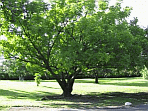
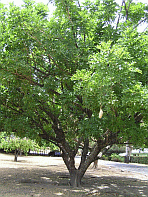
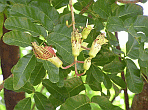
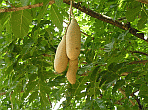
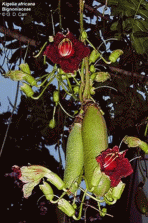
|
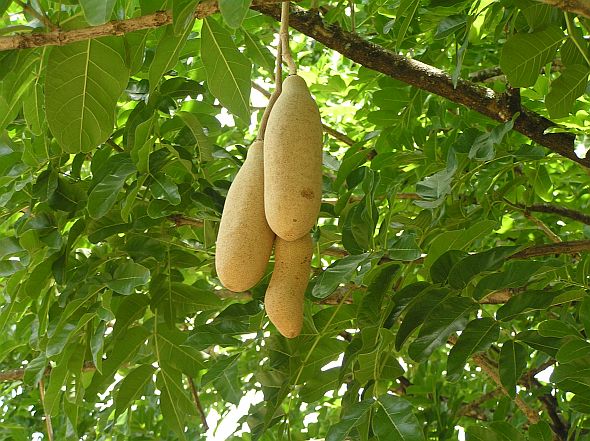
Francis Richards
Plant Family: Member of the Bignoniaceae family, which also includes Calabash Tree (Crescentia cujete), African Tulip (Spathodea campanulata), and the Pouis (Tabebuia sp.)
Description: Moderate-sized tree with dense, rounded to spreading crown reaching 20 m (65 ft); short, squat trunk has light brown, sometimes flaky bark; large leathery, slightly glossy pinnate leaves and long, hanging racemes (stocks) of conspicuous, fragrant, dark to light purple, bell-shaped flowers; light brown, 12 cm long (5 in.), sausage-shaped fruit, from which it gets its common name, are suspended on long cord-like stalks, and weigh up to 9 kg (20 lb).
Natural Habitat: Tree is native only in Africa from Natal to Tanzania, on riverbanks, along streams and on floodplains, also in open woodland.
Origin and Distribution: Native to Tropical W. Africa and common in Tropical Africa.
Uses: Tough wood used for shelving and fruit boxes, and dugout canoes from the tree; fruit very fibrous with numerous hard seeds, tending to be inedible to humans as well as being poisonous when unripe; causes blisters in the mouth and on the skin; E. Africans brew a liquor from the fruit, although fruit itself not eaten; medicinally, fruit said to be strong purgative with antibacterial activity; in Cent. Africa, unripe fruit used in dressing wounds, and for haemorrhoids and rheumatism; extracts of Kigelia africana used as herbal relief for eczema and psoriasis; Tongans apply powdered fruit as a dressing for ulcers.
Indigenous Legends: Tree is held sacred in Central Africa; fruit is hung around dwellings as protection from violent storms or as symbols of fertility.
References:
Alan Eyre. The Botanic Gardens of Jamaica. Andre Deutsch, London 1966
H.F. Macmillan. Tropical Planting and Gardening, Macmillan, London 1956
US National Tropical Botanical Gardens, (ntbg.org). Kalaheo, Hawaii 2004
|



